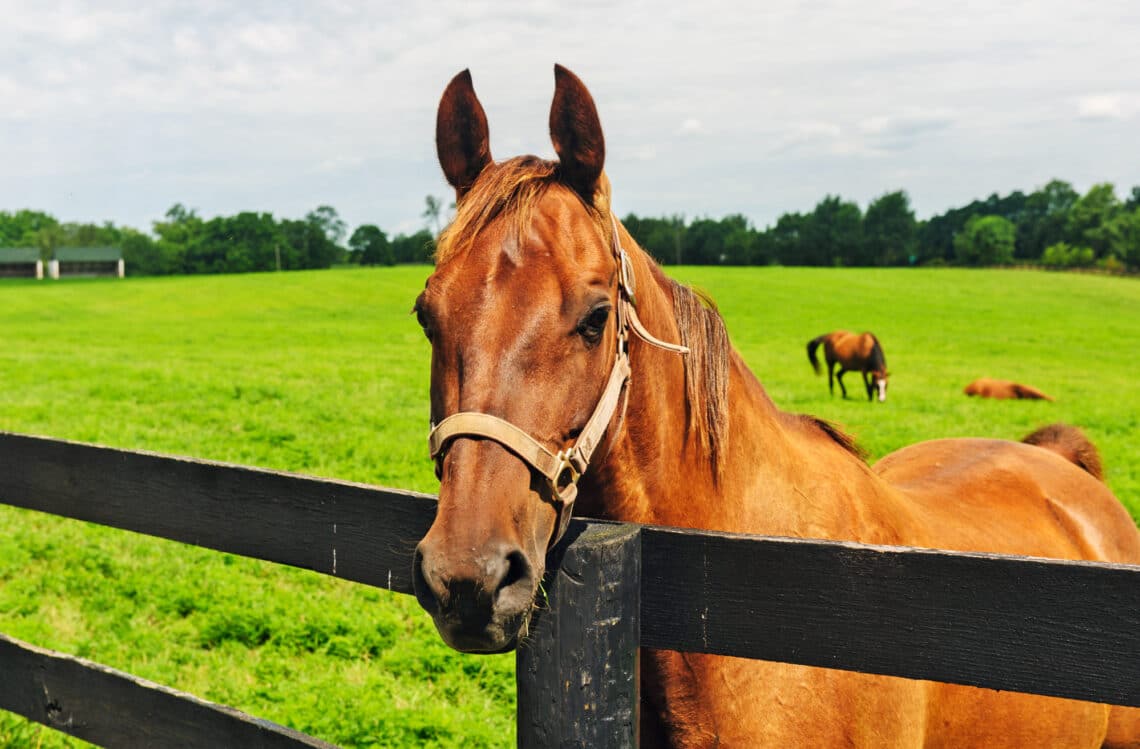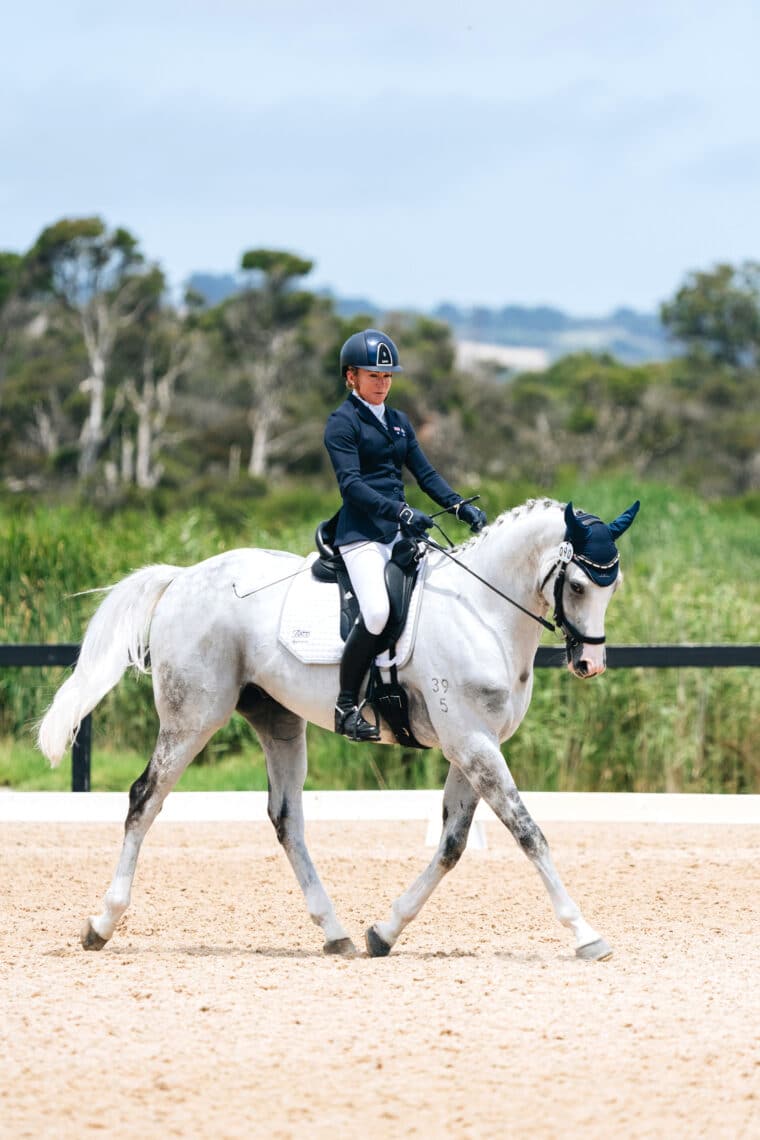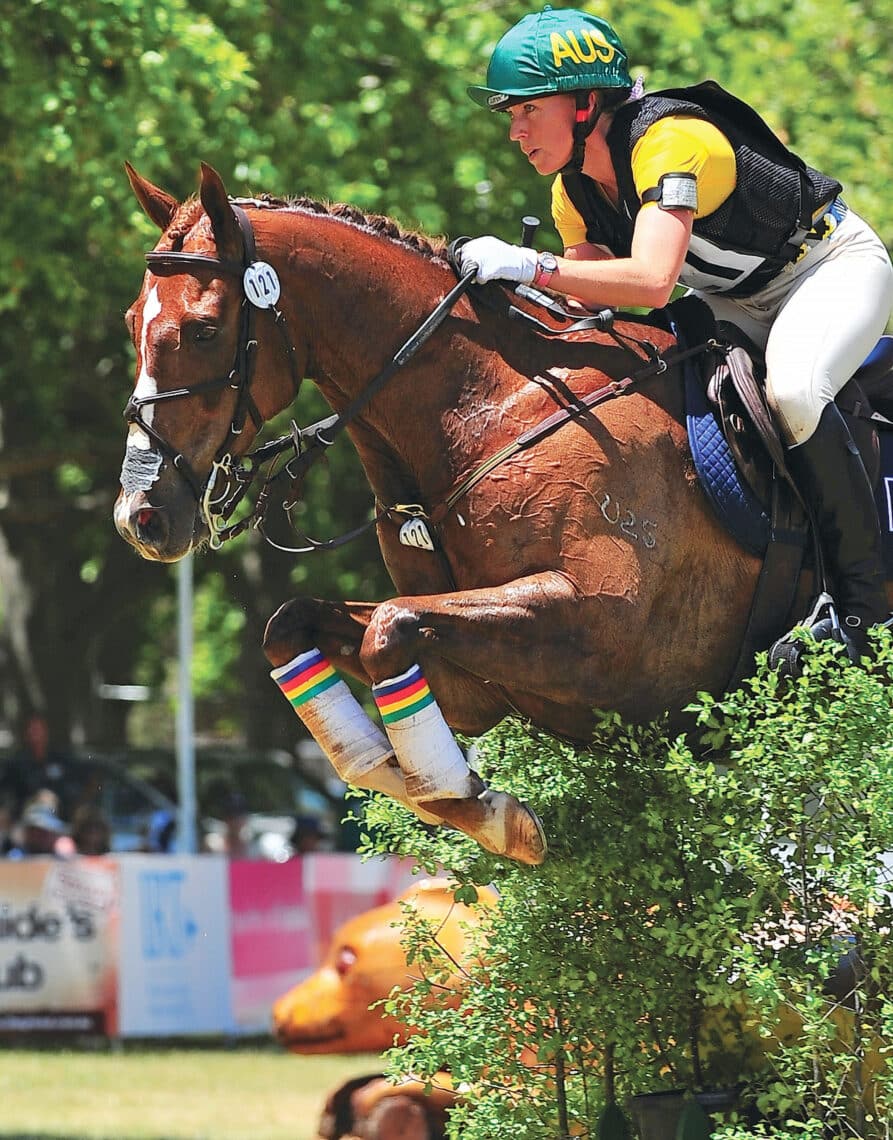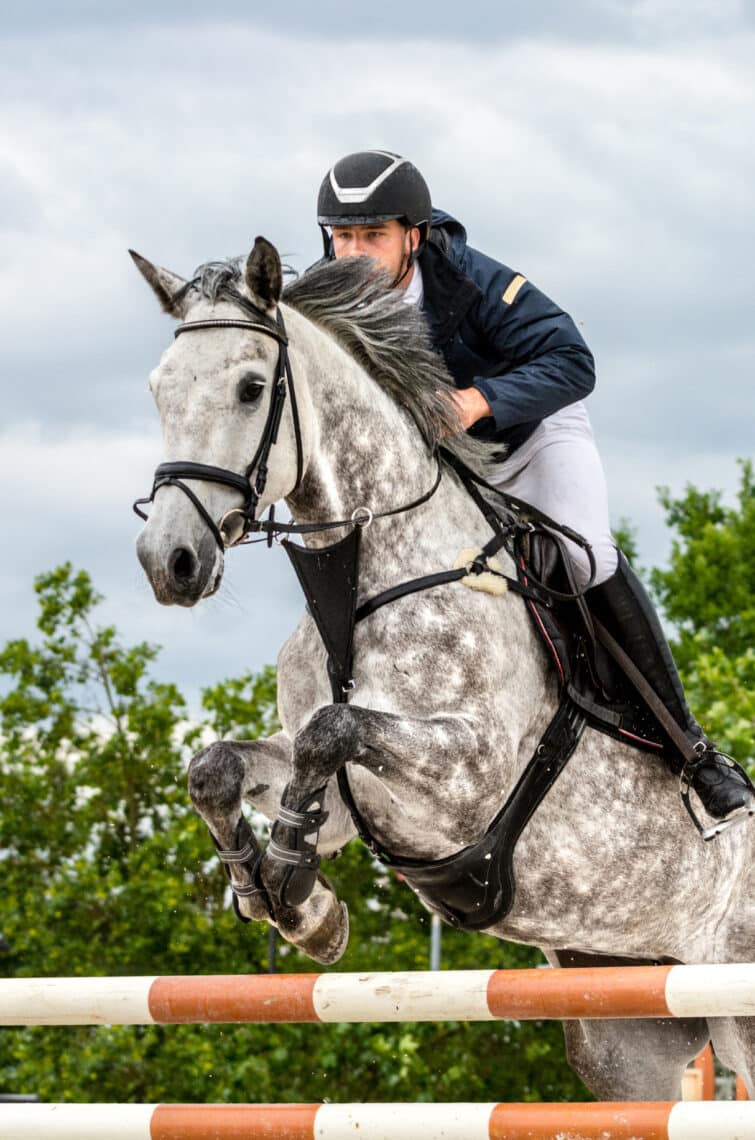
Feeding your Thoroughbred
Highly regarded for their athleticism, Thoroughbreds can prove difficult to feed – but these are problems that can be overcome, writes Dr Clarissa Brown-Douglas.
The Thoroughbred is one of the most popular breeds in equestrian circles and they are highly regarded for their athleticism, endurance and skill beyond the race track. However, these qualities can go hand in hand with a tendency to be more excitable, difficult to keep weight on, reactive, and sensitive.
Because off the track (OTT) Thoroughbreds are often a readily available and affordable option, they are a popular choice for equestrians, including taller teenagers coming off ponies. However, their ‘hotter’ nature can cause them to get a bit of a bad rap, especially in inexperienced hands. Correct nutrition can significantly help with ensuring that they are happy, healthy, and calm in their equestrian careers. So, here is a guideline to feeding the Thoroughbred sport horse.

A Thoroughbred fresh off the track will require some let down from the rigours of racing, but as with all horses, ensuring their digestive tracts are healthy is a good place to start when planning their diet, especially if they are lean. Certain health problems, including poor teeth, parasite overload, and hind gut imbalance, can make weight gain challenging. A faecal egg count will determine parasitic load and whether targeted treatment is needed. Horses with a high worm burden can have reduced nutrient absorption and difficulty maintaining body condition. An equine dental specialist should also examine the horse’s mouth to ensure no dental anomalies are causing pain or malocclusion (a misalignment of the teeth), which could make grinding feed difficult.
Stomach health is really important in Thoroughbreds and it is estimated that 90% have some level of gastric ulceration due to the stress of racing and limited free choice roughage when in training. Veterinary endoscopic examination of the stomach may reveal gastric ulceration, and your vet will prescribe the necessary treatment. Once any ulcers have been treated, stomach and hindgut health can usually be maintained with correct feed choices, including targeted supplementation.
Diet detail
The most common dietary concerns for Thoroughbred sport horses are maintaining their weight and managing behaviour. In general, the breed has a fast metabolism, which means they burn significant amounts of energy just to maintain body condition – add in work and their calorie requirement escalates. Many Thoroughbreds are underweight, either through a poor diet due to owner ignorance, or by design to keep them calmer – an underweight horse has less energy to burn. But achieving optimal body condition without the fizz is possible! So, what should you feed?
Forage first: as with all horses, the Thoroughbred’s diet should be built around high-quality roughage including pasture and ad lib hay. Roughage provides fibre, protein and calories, and works to keep the digestive tract happy. It is recommended to feed at least 1.5% of a horse’s body weight in fibre (dry matter) per day, so a 500kg horse should be offered a minimum of 7.5kg hay, or ad lib access to good pasture. Higher calorie fibre sources include lucerne hay/chaff, grass hays with lots of leaf, and super fibre sources such as beet pulp, soy hulls, stabilised rice bran, and legume hulls.

That being said, cereal grains provide good calories for performance and weight gain – but ideally, the grains should have undergone a level of processing to ensure they are properly digested. Cooking, cracking, steam flaking, extrusion and pelleting are all methods of processing grain to improve digestion.
Quality protein: Quality protein is needed to build muscle and topline, and lean Thoroughbreds will require good amounts in their diet, especially if they are still growing (under four years of age). Forage such as lucerne contains protein, but additional protein is usually needed – look for feeds containing soybean meal (a fantastic source of lysine, threonine, and methionine – the three most important amino acids) and/or legumes such as lupins.
Balanced nutrients: Be sure your Thoroughbred’s feed contains a complete vitamin and mineral premix, or that a vitamin and mineral supplement is added to the diet. Deficiencies in macro minerals including calcium, phosphorus, and magnesium, or trace minerals such as copper, zinc, selenium and iodine, can result in many issues including poor coat, poor immunity, weak bones, and spookiness. Feed manufacturers provide recommended intake rates on feed bags to meet requirements; underweight horses might have to be fed at the top end of these recommendations. Keep individual meals at less than 2.5kg, and if necessary, divide the daily allowance into two or three meals. Many horse owners coming off those easy-keeper ponies and onto a Thoroughbred are shocked at the amount of feed that may be required to keep them in optimal condition.

Thoroughbreds are notorious for having bad feet with poor hoof wall quality. Support hoof quality and growth with additional biotin in their diet – 20mg per day is recommended on top of a balanced diet containing quality protein and balanced vitamins and minerals.
Thoroughbreds also have the reputation of being ‘hot’, This can be genetic, but is usually exacerbated by poor diet and poor digestive health. There are many supplements on the market targeting gut health (unfortunately, most are lacking research and efficacy trials), but common products include antacids and buffers which reduce the acidity of the stomach and hindgut, and prebiotics such as yeast metabolites which support the microbial population. There are also many calming supplements on the market, but scientific support of these is limited.
Summing it up
Feeding for tractable behaviour in the Thoroughbred can be as much about how you feed, as what you feed. Working with your equine nutritionist to design a diet around quality fibre sources to keep the stomach and hindgut happy, balancing calories with lower starch ingredients including digestible fibre and fats/oils, and only supplementing as needed, will go a long way to producing a well-covered and calm Thoroughbred partner able to perform whatever task is asked of them.
Visit Kentucky Equine Research and Equinews™ for information on all equine nutrition related topics.



